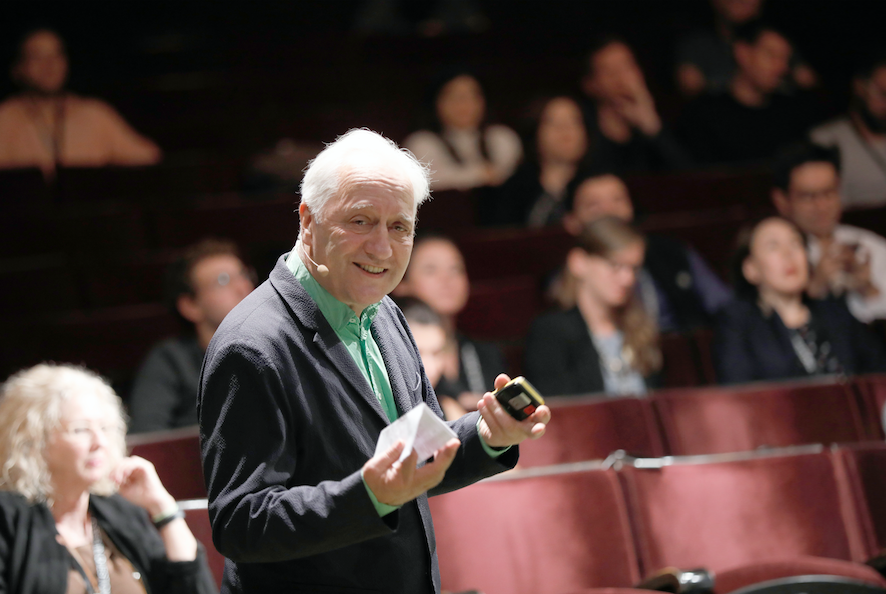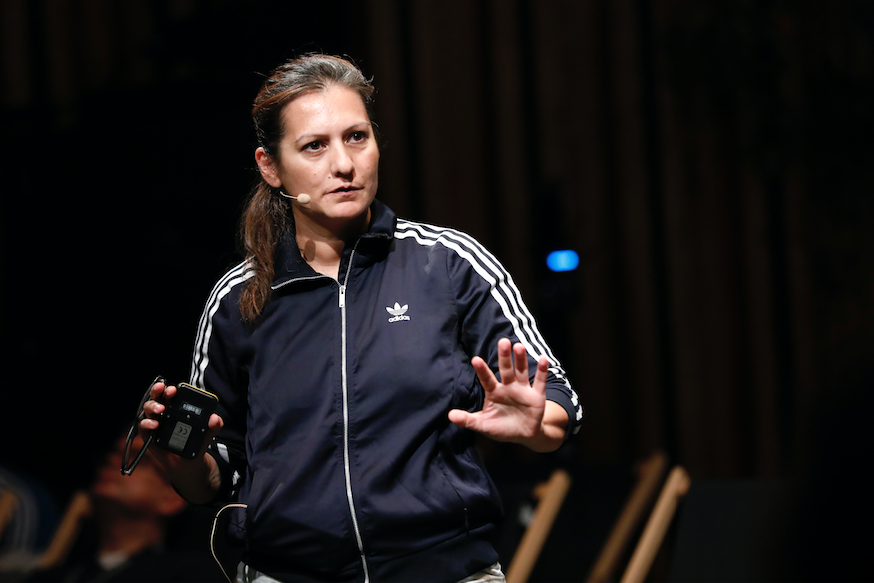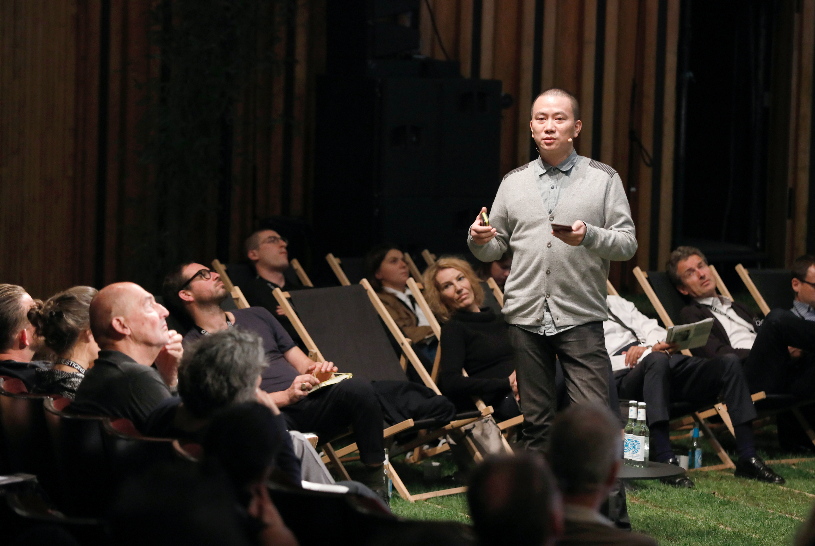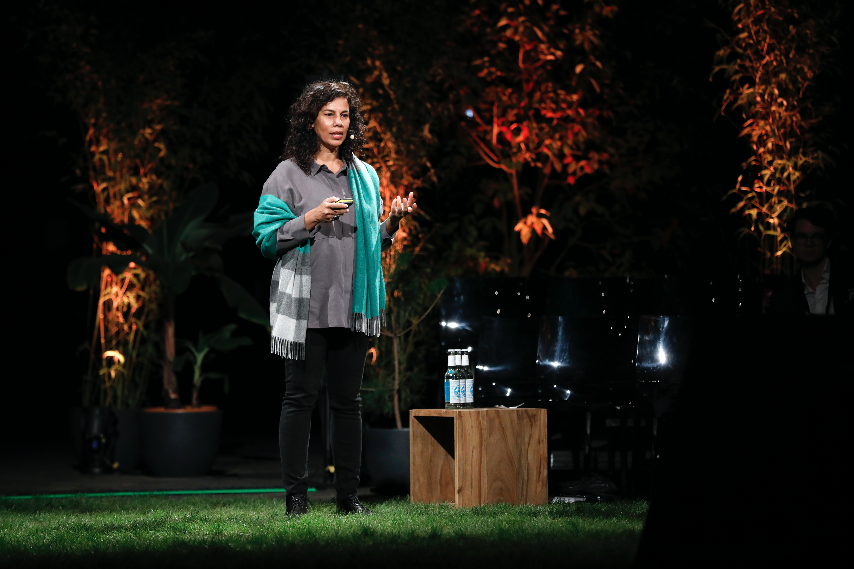Summary of session 1
As the audience gathered in the auditorium of the Schiller Theater, everyone was excited to kick off the Q Berlin Questions conference with a very important question. Around 60 per cent of the world’s population already lives in urban environments, and it is predicted that this will rise to 80 per cent over the next 30 years. How cities can offer a liveable and fulfilling space for humans was therefore the topic of the first session.
The opening talk was held by the famous architect Rem Koolhaas, who took the audience on a journey through his work and the buildings he has designed. Along the way he explained the intentions and ideas behind the shapes, choice of construction material and architectural styles, always referring to existing structures, cultural peculiarities, economical necessities and events showing the current zeitgeist. On the one hand he is criticised for buildings he created for despots, on the other he himself criticizes the West for obeying the dictates of a consumerist society.
Next on stage was Charles Landry, who promoted the idea of a new society that is nomadic and living all over the world. This society will need cities that are highly adaptable and that allow and even demand outbursts of creativity. These experiments - which will supposedly advance humanity further - need these civic spaces. Landry suggests that Berlin could very well be the prototype for that kind of city.
Next up was a speaker who also looks deeply into the connections between politics and architecture. Pelin Tan talked about socially engaged architecture and used examples to show how people can come together in order to engage socially. The need to organize and build cities, camps and the land between urban, suburban and rural areas in such a way that people are able to connect and also enjoy their surroundings is the challenge that city planners and architects now face.
The perspective from the east, particularly from China, was then introduced by Jiang Jun. He shares the long-term planning concepts that China is famous for and the advantages these have when planning for crisis. One of the next steps China is taking is towards decentralisation. Concentrating everything in Beijing is not the right way, so new and task-dedicated centers like Hangzhou are the future.
Anupama Kundoo designed the stage for the Q Berlin Questions conference and made the conscious decision to make it green, accessible from all sides and evocative of the stages of ancient Greece. In her talk she described why and how it is necessary to build affordable and sustainable houses and communities. Innovation is just one thing that this approach needs, as well as the rejection of western based models of urban and rural development.
Overall, session one gave a broad look into the minds of current leading architects and urban planners. They all somewhat questioned the western model of urbanization and explored how different cultures embrace different ways of development, always looking at the connections between politics, culture and the expression of a population's desires.




